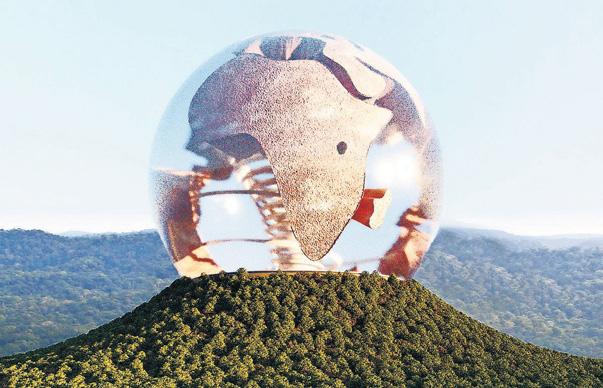09/10/2023
09/10/2023

NEW YORK, Oct 9, (Agencies): UNESCO the United Nations' cultural organization, has unveiled plans to create the world's first virtual museum dedicated to stolen cultural artifacts. The goal of this initiative is to raise awareness about cultural heritage trafficking and the significance of preserving these treasures.
UNESCO's director general, Audrey Azoulay, emphasized the importance of this project, stating, "Behind every stolen work or fragment lies a piece of history, identity, and humanity that has been wrenched from its custodians, rendered inaccessible to research, and now risks falling into oblivion."
In collaboration with Interpol, which maintains a database of over 52,000 cultural objects stolen from museums, collections, and archaeological sites worldwide, UNESCO aims to open the $2.5 million virtual museum in 2025.
Visitors to the virtual museum will explore various digital spaces featuring detailed 3D images of stolen artifacts, along with accompanying materials that explain their cultural significance. These materials will include stories and testimonies from local communities.
The specific items that will comprise the initial collection of the virtual museum have not been named yet, but Unesco intends to reveal them closer to the museum's launch.
Notable stolen artifacts listed by the Antiquities Coalition include a third-century alabaster stone inscription from Yemen, a seventh-century BC ivory relief from Iraq, a green stone mask from Guatemala, and a fifth-sixth-century figurine from India.
Ernesto Ottone, Unesco's assistant director-general for culture, explained the museum's mission: "We will exhibit them virtually, in a space where we can really tell the story and the context behind them."
Ultimately, UNESCO hopes to contribute to the recovery of stolen objects and promote the repatriation of cultural property. Ottone stated that the virtual museum's long-term goal should be its own diminishment as stolen items are gradually recovered.
The project's architect, Francis Kéré, who recently won the prestigious Pritzker Prize for architecture, expressed the aim of "awakening the imagination" and highlighting the deep connection between cultural artifacts and their communities.
Kéré's design features an extendable virtual "ramp" within a globe, connecting regions, countries, cultures, and the 600 artifacts comprising the opening collection.
Creating scalable 3D images of these artifacts has proven to be a time-consuming task, as many lack physical records beyond small black-and-white photos.
Azoulay summed up the significance of the virtual museum, saying, "The works' presentation is enhanced by a deep dive into their universe, into the cultural and social movements from which they were born—linking the material and the immaterial."
UNESCO's efforts align with its 1970 convention on preventing the illicit import, export, and sale of cultural property, urging signatory states to combat trafficking—a practice increasingly associated with organized crime, as noted by Interpol.


